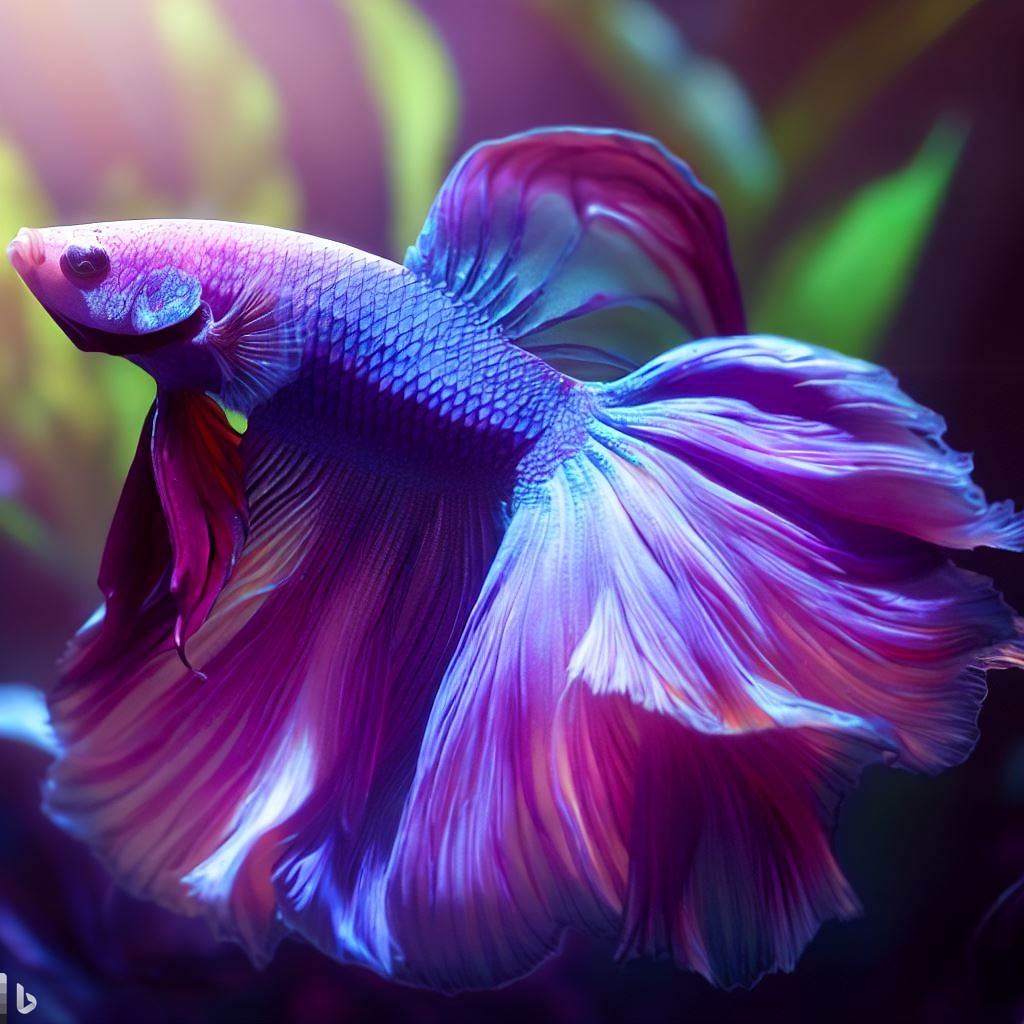Betta Fish Tank Setup: A Step-by-Step Overview for Beginners
Wiki Article
Everything About Betta Fish: Comprehending Their Distinct Needs, Habits, and the very best Practices for Ideal Treatment
Recognizing the distinct needs and behaviors of Betta fish is essential for any type of aquarist looking to supply optimal treatment. betta fish. As we check out these components additionally, the effects for both newbie and knowledgeable fish keepers end up being increasingly evident, increasing questions regarding exactly how ideal to fit these exceptional fish in our homes.Betta Fish Overview
Although commonly admired for their dynamic colors and moving fins, Betta fish, scientifically known as Betta splendens, are complicated animals that require particular care to grow. Originating from Southeast Asia, these freshwater fish are recognized for their territorial nature and unique actions. Betta fish display sexual dimorphism, with males presenting much more brilliant colors and longer fins than ladies.Their aggressive tendencies, specifically among males, require careful consideration when housing them. Bettas are often kept in single-specimen tanks to stop territorial conflicts. However, they can exist side-by-side peacefully with specific compatible types in larger area containers, offered the setting satisfies their demands.

To make sure ideal treatment, aquarists should comprehend their distinct behavior characteristics, dietary demands, and environment demands. betta fish. With proper interest, Betta fish can display their lively individualities and thrive in a properly maintained aquarium setup
Natural Environment and Atmosphere
Betta fish thrive in a varied variety of all-natural habitats, mostly found in the superficial waters of Southeast Asia, including rice paddies, swamps, and slow-moving streams. These settings are identified by cozy temperature levels, typically in between 75 ° F and 82 ° F(24 ° C and 28 ° C ), and a pH degree ranging from 6.5 to 7.5, which is ideal for their health and wellness and well-being.
In their all-natural surroundings, Betta fish are accustomed to dense greenery, offering both shelter and reproducing grounds. The presence of plants such as floating water lilies and thick turfs not only supplies security from killers yet likewise adds to the oxygenation of the water, which is vital for their respiratory system requirements. In addition, these environments commonly have locations of still water, permitting Betta fish to display their natural actions such as bubble nesting.
Understanding the all-natural habitat of Betta fish is critical for aquarium enthusiasts. Duplicating these conditions-- via water temperature, pH balance, and the addition of live plants-- can considerably boost the overall wellness and durability of these exciting fish, ensuring they prosper in a home fish tank setting.
Social Actions and Communications
Recognizing the social habits and communications of Betta fish is vital for effective fish tank monitoring. Betta fish, or Siamese fighting fish, are understood for their special behavior characteristics, defined mostly by territoriality and aggressiveness. Males, specifically, present very hostile behaviors in the direction of each other, resulting in the notorious credibility of Betta fish as boxers. In a constrained area, two males can involve in fierce battles, typically leading to injury or fatality.On the other hand, female Bettas show much less hostile actions and can exist side-by-side in teams, known as sororities, if introduced properly. It is vital to check their interactions very closely, as pecking order and prominence can lead to conflicts. Recognizing the characteristics within a Betta neighborhood is important; developing concealing areas and making sure adequate space can reduce aggressiveness.
Furthermore, Betta fish might likewise display inquisitiveness and social actions in the direction of other species. look at more info While they can exist together with particular non-aggressive tank friends, it is important to select suitable varieties to avoid stress and hostility. In general, acknowledging these social communications is essential to promoting an unified fish tank atmosphere for Betta fish.
Essential Care Guidelines
Giving correct care for Betta fish is crucial to their wellness and health. Normal water adjustments-- about 25% weekly-- aid maintain water top quality.Betta fish call for an ideal storage tank size; a minimum of 5 gallons is recommended to supply appropriate area for swimming and hiding. Include designs and plants to produce a revitalizing environment, yet stay clear of sharp items that can damage their fragile fins.
:strip_icc()/how-long-do-bettas-live-1380782-hero-813aa5d34bab48cdb333edfe02471dad.jpg)
Last but not least, make sure the container is geared up with a filter to keep the water tidy, yet use a mild filter to stay clear of solid currents that can emphasize the fish. By following these vital treatment guidelines, proprietors can promote a healthy and balanced and vivid Betta fish.
Common Health And Wellness Issues and Solutions
In the treatment of Betta fish, awareness of typical wellness problems is necessary for preserving their wellness. One widespread problem is fin rot, commonly triggered by bad water high quality or bacterial infection. Symptoms consist of frayed or discolored fins. To deal with fin rot, boost water conditions and take into consideration using a broad-spectrum antibiotic.An additional usual condition is ich, a parasitical infection defined by white places on the fish's body (betta fish). Treatment entails enhancing water read the article temperature and adding fish tank salt to the tank, as this can help remove the bloodsucker
Swim bladder disorder is likewise frequently observed, resulting in buoyancy issues. This problem may emerge from overfeeding or irregularity. A fasting period of 24-48 hours, adhered to by a diet of blanched peas, can provide alleviation.
Last but not least, bettas might experience velour condition, indicated by a gold dust-like look on their skin. Therapy normally calls important site for medicine particularly created for outside parasites, alongside improved container hygiene.
Normal surveillance of water specifications, keeping a tidy setting, and giving a well balanced diet are vital preventive procedures. By dealing with these wellness problems quickly, Betta fish can lead much healthier, a lot more vivid lives.
Conclusion
In summary, effective betta fish treatment needs an understanding of their distinct needs and habits. Routine monitoring of wellness and water quality, along with a balanced diet plan, adds to the long life and vibrancy of betta fish.Report this wiki page